Explore web search results related to this domain and discover relevant information.
even darker as more trading takes ... of dark pools — concealing large equity transactions to avoid affecting market prices — while adding a layer of exclusivity by strictly defining who is allowed to participate in each trade....
even darker as more trading takes place in venues literally called ‘private rooms.’ These are restricted platforms that build on the main advantage of dark pools — concealing large equity transactions to avoid affecting market prices — while adding a layer of exclusivity by strictly defining who is allowed to participate in each trade.The battle for faster chips, smarter AI, and greater data storage is taking on a geopolitical dimension – which raises some unexpected questions in the trading industry.So, while we need cutting-edge software to get our data, we’ve never played the same game as the high-frequency traders, some of whom route purpose-built fiber-optic cables through mountains so that they can execute trades microseconds ahead of their competitors.Think about it. XTX’s Finnish data centers will house thousands of graphics processing units (GPUs) to train AI models, relying on data from millions of daily trades worldwide. If data is the new oil of the trading industry, HFT firms are the refineries, turning raw information into profits.
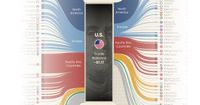
America’s trade deficit of goods shot up to a whopping record $1.1 trillion in 2021 from $922 billion in 2020, leading to its largest ever deficit. Imports dwarfed exports, reaching new highs of $2.9 trillion in 2021, while U.S.
Let’s take a look at the 10 countries that trade the most with the United States: From a geographic perspective, the two largest trading partners are based in North America (Canada and Mexico).Below we order U.S. trade partners by trade deficit of goods: The second largest U.S. trade deficit is with Mexico with $108 billion. The main imports from Mexico are cars, trucks, and auto parts.In 2021, U.S trade of goods amounted to nearly $4.6 trillion and Canada, Mexico, and China were America’s largest trading partners.The largest trade deficit is undoubtedly with China, which accounts for more than 32% of the U.S.
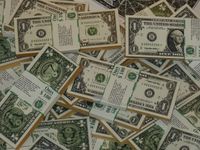
Financial trading organizations are among some of the biggest in the world. Many of these trading firms in the list below are part of larger global investment banks. Traders engage in the buying and selling bonds, stocks, futures, and shares in hedge funds.
Financial trading organizations are among some of the biggest in the world. Many of these trading firms in the list below are part of larger global investment banks. Traders engage in the buying and selling bonds, stocks, futures, and shares in hedge funds. Stock traders also research how financial markets perform.This is done in one of two ways, either via an exchange or over the counter. An exchange is a marketplace where you can trade a specific type of asset. Over-the-counter trades are made directly between two parties. Below we list and discuss in more detail the top ten largest trading companies in the United States.It is the largest banking institution in Germany, offering three different divisions, including the Private Commercial Bank, the Corporate Investment Bank (CIB), and Asset Management (DWS). They were founded in Berlin in 2870 as a specialist bank for financing foreign trade and promoting German exports.Citigroup offers banking, consumer banking, corporate banking, insurance, investment banking, mortgage loans, private banking, private equity, wealth management, and credit cards. It is currently publicly traded on the New York Stock Exchange (NYSE).
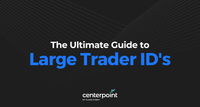
What are large trader IDs and how do you get one? Learn everything you need to know about large trade IDs in our thorough guide.
The “meme” stock revolution has empowered the retail trader as groups of independent retail traders all jumping into specific stocks can cause major volatility and price moves. However, for these moves to continue to extend and remain elevated, it takes the hand of “large traders” to make this happen.They trade bigger size usually in blocks and have the ability to make significant market impact. The U.S. Securities and Exchange Commission (SEC) adopted a Large Trader reporting requirement rule on July 26, 2011. This was prompted by the May 6, 2010, flash crash that caused the Dow Jones to collapse (-998.5 points) or (-9%) within minutes, causing the second largest intraday crash in history up to that time.SEC realized that advent of program trading and high-frequency trading programs had the potential to disrupt markets especially with faster execution speeds and more access to various alternate trading systems (ATS). By implementing Large Trader ID numbers, they could track the activities forensically the participants most likely to move the markets.According to the U.S. Securities and Exchange Commission (SEC), a large trader is a person or entity that trades in excess of 2,000,000 shares or $20 million during any calendar day or 20,000,000 shares or $200 million during any calendar month. This can include hedge funds, mutual funds, family offices, and institutions including insurers and banks as well as retail traders.
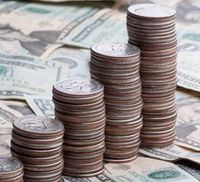
Earnings announcements and analyst ratings are also closely associated with momentum trading. Momentum traders look for unexpected events that cause a stock to trade a large volume of shares and move steadily either up or down.
The Journal of Financial Research. "Trading Patterns of Small and Large Traders Around Stock Split Ex-Dates."Fundamental trading is a method where a trader focuses on company-specific events to determine which stocks to buy and when to buy them.Fundamental trading is a method where a trader focuses on company-specific events to determine which stock to buy and when to buy it. Trading on fundamentals is more closely associated with a buy-and-hold strategy rather than short-term trading.Fundamental Trading: Fundamentalists trade companies based on fundamental analysis, which examines corporate events, particularly actual or anticipated earnings reports, stock splits, reorganizations, or acquisitions.
According to a study in 2010 by ... traders. In 2012, according to a study by the TABB Group, HFT accounted for more than 60 percent of all futures market volume in 2012 on U.S. exchanges. High-frequency trading is quantitative trading that is characterized by short portfolio holding periods. All portfolio-allocation decisions are made by computerized quantitative models. The success of high-frequency trading strategies is largely driven by ...
According to a study in 2010 by Aite Group, about a quarter of major global futures volume came from professional high-frequency traders. In 2012, according to a study by the TABB Group, HFT accounted for more than 60 percent of all futures market volume in 2012 on U.S. exchanges. High-frequency trading is quantitative trading that is characterized by short portfolio holding periods. All portfolio-allocation decisions are made by computerized quantitative models. The success of high-frequency trading strategies is largely driven by their ability to simultaneously process large volumes of information, something ordinary human traders cannot do.Quote stuffing is a form of abusive market manipulation that has been employed by high-frequency traders (HFT) and is subject to disciplinary action. It involves quickly entering and withdrawing a large number of orders in an attempt to flood the market, creating confusion in the market and trading opportunities for high-frequency traders.For example, a large order from a pension fund to buy will take place over several hours or even days, and will cause a rise in price due to increased demand. An arbitrageur can try to spot this happening, buy up the security, then profit from selling back to the pension fund. This strategy has become more difficult since the introduction of dedicated trade execution companies in the 2000s which provide optimal trading for pension and other funds, specifically designed to remove the arbitrage opportunity.Regulators claim these practices contributed to volatility in the May 6, 2010, Flash Crash and find that risk controls are much less stringent for faster trades. Members of the financial industry generally claim high-frequency trading substantially improves market liquidity, narrows bid–offer spread, lowers volatility and makes trading and investing cheaper for other market participants. An academic study found that, for large-cap stocks and in quiescent markets during periods of "generally rising stock prices", high-frequency trading lowers the cost of trading and increases the informativeness of quotes; however, it found "no significant effects for smaller-cap stocks", and "it remains an open question whether algorithmic trading and algorithmic liquidity supply are equally beneficial in more turbulent or declining markets.CME Group, a large futures exchange, stated that, insofar as stock index futures traded on CME Group were concerned, its investigation had found no support for the notion that high-frequency trading was related to the crash, and actually stated it had a market stabilizing effect.

Rule 13h-1 will require a "large trader,' defined as a person whose transactions in NMS securities equal or exceed 2 million shares or $20 million during any calendar day, or 20 million shares or $200 million during any calendar month, to identify itself to the Commission and make certain ...
Rule 13h-1 will require a "large trader,' defined as a person whose transactions in NMS securities equal or exceed 2 million shares or $20 million during any calendar day, or 20 million shares or $200 million during any calendar month, to identify itself to the Commission and make certain disclosures to the Commission on Form 13H.Upon receipt of Form 13H, the Commission will assign to each large trader an identification number that will uniquely and uniformly identify the trader, which the large trader must then provide to its registered broker-dealers.Such registered broker-dealers will then be required to maintain records of two additional data elements in connection with transactions effected through accounts of such large traders (the large trader identification number, and the time transactions in the account are executed).In addition, the Commission is requiring that such broker-dealers report large trader transaction information to the Commission upon request through the Electronic Blue Sheets systems currently used by broker-dealers for reporting trade information.
A large trader is an investor or organization whose trades exceed a Securities and Exchange Commission (SEC) volume and dollar amount threshold.
The SEC identifies large traders as any trader whose transactions in National Market Securities (NMS) equals or exceeds two million shares or $20 million during any calendar day, or 20 million shares or $200 million during any calendar month.The SEC monitors the activity of large traders in order to analyze the impact of their activity on the markets, to identify activity that breaks securities laws, and to protect investors from manipulative market practices.The SEC initiated large trader reporting pursuant to the Market Reform Act of 1990 and in response to the development of trading technology that enables trading in substantial volumes and fast execution speeds.In the Market Reform Act of 1990 and later proposals, the SEC cited the rising prominence of large traders and high-frequency traders (HFTs) in the markets and the need for improved access to their trading activity in NMS securities. Large trader reporting is intended to help the SEC identify individuals engaged in significant market activity and analyze the impact of their trading activity on the market.
:max_bytes(150000):strip_icc()/close-up-of-stock-market-data-on-digital-display-1058454392-c48e2501742f4c21ad57c25d6a087bd0.jpg)
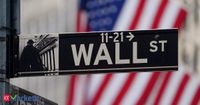
Investors and analysts cited blocks of Viacom and Discovery shares being put in the market on Friday for likely exacerbating the decline in those stocks. Viacom was also downgraded by Wells Fargo on Friday.
The block trades were linked to sales of holdings by Archegos, a source familiar with the situation said, confirming reports elsewhere. A number of large block trades on Friday, which investors said caused big drops in the stocks of a clutch of companies, were linked to the Archegos Capital investment fund, a source familiar with the situation said, with the moves raising worries about volatile trading in the coming days.In more potentially unnerving news for investors, Japan's Nomura Holdings Inc on Monday flagged a potential $2 billion loss at a U.S. subsidiary although traders were not clear whether it was related to Archegos. BANKS INVOLVED A number of banks were involved in the block sales. A source familiar with the matter said on Saturday that Goldman Sachs Group Inc was involved in the large block trades."Some of the names where big blocks were traded on Friday might see some near-term volatility as traders wonder whether the selling is complete." Mike O'Rourke, chief market strategist at JonesTrading said he expected the trades to "largely be done." "The prime brokers made lots of noise in marketing these blocks," O'Rourke said.Large block trades on Wall Street: Here's what exactly happenedReutersLast Updated: Mar 29, 2021, 08:59:00 AM IST
IMC is where the brightest minds in trading, technology, and quant research come together to solve the industry’s greatest challenges. Explore careers with us.
We're a top-3 liquidity provider by volume traded in listed options globally.Through our sales desks, buy-side firms can trade off-screen directly with IMC.IMC is at the heart of today's expanding ETF ecosystem, acting as a Lead Market Maker (LMM) in more than 150 US exchange-traded funds (ETFs).

SWFI is an investor research platform offering family offices, private equity firms, banks, and institutional investors actionable news, insights, and data.
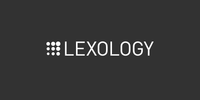
The LT Reporting Rule requires every “large trader” to register with the SEC by filing a new Form 13H, requires that they provide the identities of the broker-dealers they use to the SEC, and requires that they also provide the broker-dealers they use with a large-trader identification ...
The LT Reporting Rule requires every “large trader” to register with the SEC by filing a new Form 13H, requires that they provide the identities of the broker-dealers they use to the SEC, and requires that they also provide the broker-dealers they use with a large-trader identification number (LTID) that will be assigned to all large traders by the SEC.The SEC believes that the LT Reporting Rule is necessary, in part, because “large traders appear to be playing an increasingly prominent role in the securities markets.” As stated by the SEC, market observers have offered a wide range of estimates for the percent of overall volume attributable to one potential subcategory of large trader – high-frequency traders – which is typically estimated at 50 percent of total volume or higher.As a result of these new reporting requirements, large traders will be on the SEC radar and each broker who services a large trader will also be subject to an additional reporting burden, making it difficult for small brokers to service large traders.Potentially, selling $10 million of securities and using the proceeds to purchase $10 million in new securities on the same day will also push a trader over the threshold.4 · Pepper Point: As a notable exception, the actual transfer of the basket of securities between an authorized participant and an ETF is not counted for purposes of large trader reporting.
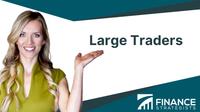
According to the SEC's Rule 13h-1, a large trader is someone who buys or sells the same security, through one or more accounts, in an amount equal to or exceeding 2 million shares or $20 million in a single day, or 20 million shares or $200 million in a calendar month.
These traders have the potential to impact market prices and liquidity due to the size and frequency of their transactions. The identification of large traders is important for market surveillance, ensuring transparency, and detecting potential market manipulation.By analyzing trading data and transaction records, market surveillance systems can detect traders with high trading volumes or frequency. Unusually large trades or patterns of trading activity can indicate the presence of a large trader.Exchanges and market data providers collect and analyze trading information, including order book data and trade execution data. By examining this data, market participants and regulators can identify traders who consistently engage in large or influential trading activity.It allows securities to be bought and sold easily without causing drastic price changes. However, large traders can also disrupt liquidity if they trade in large volumes and others are unwilling or unable to take the other side of the trade.
Any trader who fits the definition of Large Trader according to the SEC must register with the SEC by filing SEC Form 13H. The SEC will assign every Large Trader an identification number called the Large Trader ID Number. Large Traders are required to provide their Large Trader ID Number to ...
Any trader who fits the definition of Large Trader according to the SEC must register with the SEC by filing SEC Form 13H. The SEC will assign every Large Trader an identification number called the Large Trader ID Number. Large Traders are required to provide their Large Trader ID Number to all brokerages that the trader uses.IBKR provides a page in our account management Portal called Large Trader Identification where a Large Trader can enter the SEC-assigned Large Trader ID Number.Learn More About IBKR 1. IBKR Lite provides commission-free trades in US exchange-listed stocks and ETFs.
The Commission staff uses data like this to identify large cleared positions in single markets or across many markets and exchanges, to audit large trader reports, and to resolve any account aggregation issue.
Also, the data would not reveal a circumstance where a single trader controls substantial portions of the customer positions with more than one clearing member, and therefore, could control a substantial portion of the market. To address such a limitation on clearing member data, the Commission’s market surveillance program uses large trader data.CFTC staff use this information to determine if the reported account is a new trader or is an additional account of an existing trader. If the account is an additional one of an existing trader, it is then aggregated with that of other related accounts currently being reported. The CFTC uses various means to ensure the accuracy of its large trader data.Under 17 CFR Parts 18 or 21, the CFTC also has the authority to require that a trader provide additional information about a firm’s traders and/or about a participant’s trading and delivery activity, including information on persons who control or have a financial interest in the account. This method of obtaining large trader data is not used frequently.The large trader positions reported by clearing members are compared to clearing-member data reported by the exchanges.

Gain a comprehensive understanding of cryptocurrency market dynamics with CoinGlass's in-depth Large Order analysis. Our powerful tools provide real-time insights into Bitcoin large orders,Bitcoin large trades, exchange order flows, and historical order data, enabling you to decipher the hidden ...
Gain a comprehensive understanding of cryptocurrency market dynamics with CoinGlass's in-depth Large Order analysis. Our powerful tools provide real-time insights into Bitcoin large orders,Bitcoin large trades, exchange order flows, and historical order data, enabling you to decipher the hidden intentions of major market players.

Traders who are Large Traders according to the SEC definition must register with the SEC by filing SEC Form 13H .
For Futures, a large trader is one who holds a position in any one future or option expiration series of a commodity on any one exchange equaling or exceeding the exchange or CFTC-specified reporting level.US exchange-listed stock and option transactions equaling or exceeding 2 million shares or $20 million during any calendar day or 20 million shares or $200 million during any calendar monthAs defined by the US Securities and Exchange Commission in 2011, any U.S. or non-US person or entity that trades or controls trading (in one or more accounts) in US exchange-listed stock and option transactions equaling or exceeding:Learn More About IBKR 1. IBKR Lite provides commission-free trades in US exchange-listed stocks and ETFs.

The Commodity Futures Trading Commission ("Commission" or "CFTC") is amending certain regulations setting forth large trader position reporting requirements for futures and options. The amendments, among other things, remove the 80-character submission standard and delegate authority to the...
Additionally, in response to certain comments, the Proposed Part 17 Guidebook has been revised to enable reporting firms to submit certain of the product-related data elements enumerated in appendix C using a “Unique Instrument Code.” The Commission believes the amendments it is adopting herein will improve data quality and modernize the Commission's large trader position data reporting scheme for futures and options.Part 16 requires contract markets to submit certain information to the Commission; Parts 17 and 21 require reporting firms to submit certain information to the Commission; and Parts 18 and 19 require individual traders to submit certain data to the Commission. Within this framework, part 17 requires the submission of large trader position reports and certain account identifying information for accounts of large traders.The Proposal sought comment on whether the Part 17 Guidebook should designate FIXML as the data submission standard for § 17.00(a) large trader position reports. Commenters were generally supportive of, and did not oppose, a FIXML data submission standard, with the option to submit § 17.00(a) reports manually through the CFTC Portal.B. Statutory and Regulatory Framework for Large Trader Position Reporting
The world’s largest commodity traders are betting on metals. Trading houses traditionally more focused on energy are rapidly growing their metals desks and striking deals to secure long-term supply. John Basquill examines the market forces behind the excitement around copper, aluminium and ...
Trafigura and Glencore have historically been the two largest players in the metals market, but several of their rivals – best known for their focus on energy – are now turning their attention to the sector. Ahead of an anticipated shortfall in supply of metals needed to support the energy transition, a growing number of traders are building out metals desks, acquiring other trading houses or seeking out opportunities to secure longer-term resources.Large traders are also in a strong position financially, having posted record profits across 2022 and 2023 and, according to consultancy Oliver Wyman, were able to build up cash reserves totalling as much as US$120bn by early 2024.Long before the flurry of activity in the second half of last year, industry experts were calling on commodity traders to do more to finance longer-term supply, yet underwhelming price movements have acted as a drag on investment. An increasingly attractive prospect for the largest traders is a scenario where market uncertainty, supply chain disruption and swings in prices mean they can apply their expertise in the capital markets to trade materials while making significant sums of money.Simon Huber, group treasurer and global head of structured commodity finance at metals trading house Bluequest Resources, says he expects large traders to start building their presence in the market by taking large positions at aggressive prices.

It has great long-term potential while I use day trade to increase the total number of shares I have, Only touch SOXS when I am absolutely sure the stock is going in the other direction. Previously I also did the same with TECL, TQQQ, YANG. I also have some long-term for tax saving purposes. ... “Rule 13h-1 will require a "large ...
It has great long-term potential while I use day trade to increase the total number of shares I have, Only touch SOXS when I am absolutely sure the stock is going in the other direction. Previously I also did the same with TECL, TQQQ, YANG. I also have some long-term for tax saving purposes. ... “Rule 13h-1 will require a "large trader,' defined as a person whose transactions in NMS securities equal or exceed 2 million shares or $20 million during any calendar day, or 20 million shares or $200 million during any calendar month, to identify itself to the Commission and make certain disclosures to the Commission“If I buy 500 shares of tesla thats 125k, if I sell it thats another 125k so total thats 250k traded for that trade alone. Do it a bunch of times you end up with a large number.It is difficult for me to calculate how much I have traded during the last calender month. So the question is, should I go through the long record to check if I have exceeded 200 million in the last month? ... are you scalping, hyper scalping can easily exceed that number. For example if you scalp BRK.A 31 times in a day I think u will be classified as a large traderHave you considered filing for active trader status or filing as an LLC? That should keep the SEC monkey off your back. ... I did some research on the LLC. Couldn't figure out the details. Might try to look for a professional accountant next year. I want to use LLC to increase IRA contributions ... In the grand scheme of things, it’s not a huge deal. The filing is totally confidential. If you don’t hit that large trader threshold again between now and next year, around mid-February, you can file an amendment to indicate that you’re no longer a large trader.


:max_bytes(150000):strip_icc()/close-up-of-stock-market-data-on-digital-display-1058454392-c48e2501742f4c21ad57c25d6a087bd0.jpg)



